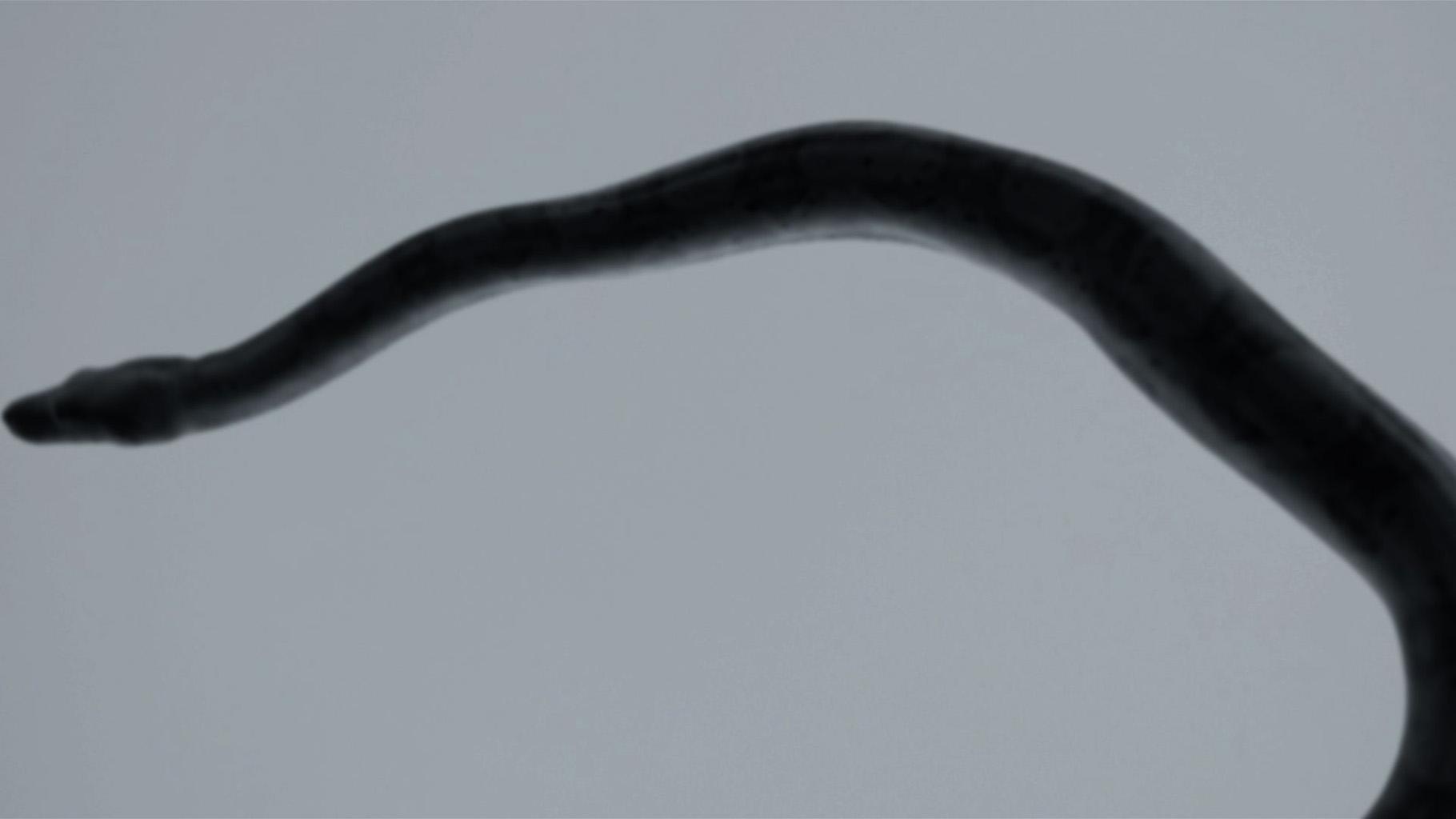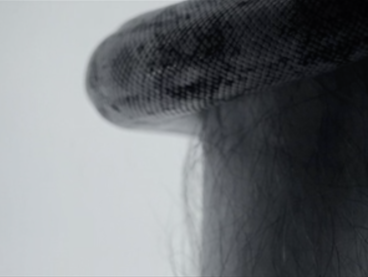MOOZ – audiovisual arts collection
[∫]
2011, 11:52 min., b/w
Direction and editing: Sunjha Kim
Camera: Rikisaburo Sato
Sound design: Sunjha Kim, Judith Nordbrock
Advisors: Prof. Ute Hörner, Prof. Raimund Krumme, Prof. Dr. Peter Bexte
Production: Academy of Media Arts Cologne
When I pronounce the sibilant ∫ to me it sounds as light as a breath of air. For me it is surprising that it is possible to convey meaning in language with this whooshing noise. Not only the sound but also the form of the phonetic symbol ∫ is interesting to me, because I associate the movement of a snake with this graphic shape. A film on the free interpretation and the reconstruction of the phonetic symbol ∫.
Interview with Sunjha Kim
The film is a free interpretation of a phonetic symbol. How did you get the idea to make a project on ∫? Is this symbol known in Korean?
In South Korea I got to know the symbol ∫ in English literature as well as in mathematics as the integral symbol. Apart from that the sinuous line seen in the symbol ∫ in my country is known as the line of beauty and is often compared with the female body shape (the S-line). The idea for this project came to me in 2010 in Germany. During my studies at the KHM I had to write many texts in German, I often used the German words Sprechen, Schreiben, Schweigen, Schwarz, Sterne, Stein, etc. At some point I noticed that almost all of my favorite words began with a sibilant, and the encounter with ∫ was a total coincidence, though I always was interested in seeing it and hearing it.
A meditative and searching camera, montage editing, and the use of many very graphic lines are elements of your work. How do these shape the film?
When one quietly contemplates the symbol ∫ it seems as if the snaking line gently moves back and forth. The top part of the line rises slowly upward, while the lower part slips lightly downward. The camera movement follows the vertical reciprocal movement of the symbol and also moving motifs like a living snake, breathing bodies, swiveling stones, and falling water. The vertical camera movement and selection of motifs represents my interpretation of the symbol ∫, perhaps also a feeling of mine, a floating sinking feeling in the weightlessness of space. I would like to thank my cameraman Rikisaburo Sato for the wonderful shots. When I began with the film shoot in Iceland I only had abstract images in my head. Rikisaburo filmed many improvised scenes on site, sometimes recording strangely beautiful images. the film wouldn’t be the same without him.
The original sound and the sound design create a dense atmosphere in the film. Did this interplay between image and sound reveal itself to you while editing or already during filming?
I already had some sounds and images in my head before filming. As I imagined the first scenes with moving bodies, I heard a quiet, delicate breathing sound. The final scene with mouth and stone I wanted to leave in absolute darkness and silence. I had a feeling that a black image would fit well with this silent moment. Many sounds and images only emerged during filming and in postproduction. In Iceland and in Germany I collected many hissing, swishing noises, for example, rushing water, sounds of wind, breathing and sibilants being spoken. From this sound material I searched out fitting sounds for the edit and in part recorded new ones.
Text — Daniel Sondermann
Sunjha Kim was born in 1983 in Anyang, South Korea. She lives and works in Cologne. After obtaining her Bachelor of Fine Arts at Seoul National University, she completed undergraduate studies at the Academy of Media Arts, Cologne, from 2007 to 2011. She received her degree in art with the experimental film [∫].
Current film
Y YAAB LA A BOÊ? („Who Is Your Grandfather?“)
D 2016| 23 min.| Direction: Sunjha Kim, Co-direction and camera: Rikisaburo Sato








